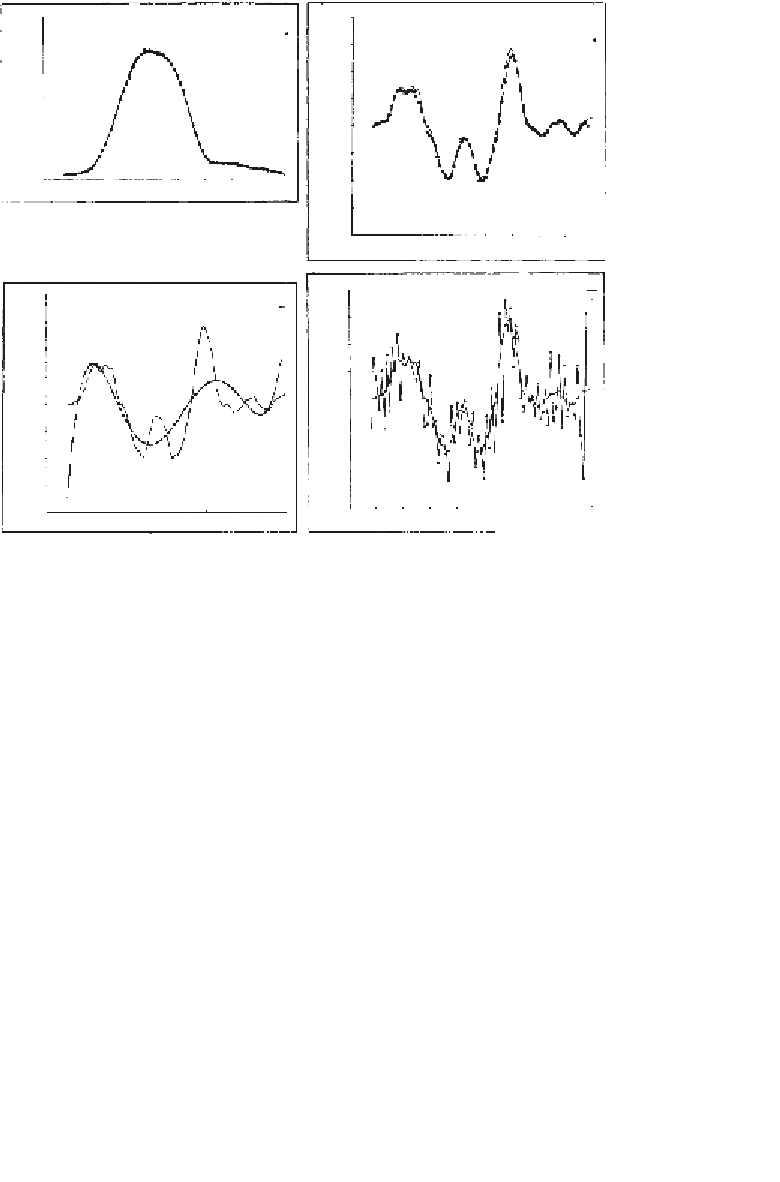Biomedical Engineering Reference
In-Depth Information
(
a
)
(
b
)
2.40
8.00
Theta vs time
Analog
Raw film data
Alpha vs time
Analog
Filtered finite
2.00
6.00
1.60
4.00
1.20
2.00
0
0.80
−
2.00
0.40
1.20
−
4.00
1.40
1.60
1.80
2.00
Time, sec
2.20
2.40
2.60
2.80
3.00
−
6.00
−
8.00
1.20
1.40
1.60
1.80
2.00
Time, sec
2.20
2.40
2.60
2.80
3.00
(
d
)
Alpha vs time
Analog
Finite difference
8.00
(
c
)
Alpha vs time
Analog
Chebyshev
8.00
6 00
6.00
4.00
4.00
2.00
2.00
0
0
−
2.00
−
2.00
−
4.00
−
4.00
−
6.00
−
6.00
−
8.00
−
8.0
1.20
1.20
1.40
1.60
1.80
2.00
Time, sec
2.20
2.40
2.60
2.80
3.00
1.40
1.60
1.80
2.00
Time, sec
2.20
2.40
2.60
2.80
3.00
Figure 3.22
Comparison of several techniques used to determine the acceleration of a
movement based on film displacement data. (a) Displacement angle of a simple exten-
sion/flexion as plotted from film and goniometer data. (b) Acceleration of the movement
in (a) as measured by an accelerometer and as calculated from film coordinates after
digital filtering. (c) Acceleration as determined from a ninth-order polynomial fit of the
displacement data compared with the directly recorded acceleration. (d) Acceleration as
determined by finite-difference technique of the raw coordinate data compared with the
accelerometer curve. (Reproduced by permission from the Journal of Biomechanics.)
Finally, in Figure 3.22
d
, you can see the accelerometer signal plotted
against angular acceleration as calculated by second-order finite-difference
techniques using raw coordinate data. The plot speaks for itself — the accel-
erations are too noisy to mean anything.
3.5
CALCULATION OF OTHER KINEMATIC VARIABLES
3.5.1 Limb-Segment Angles
Given the coordinate data from anatomical markers at either end of a limb
segment, it is an easy step to calculate the absolute angle of that segment in
space. It is not necessary that the two markers be at the extreme ends of the
limb segment, as long as they are in line with the long-bone axis. Figure 3.23










Search WWH ::

Custom Search